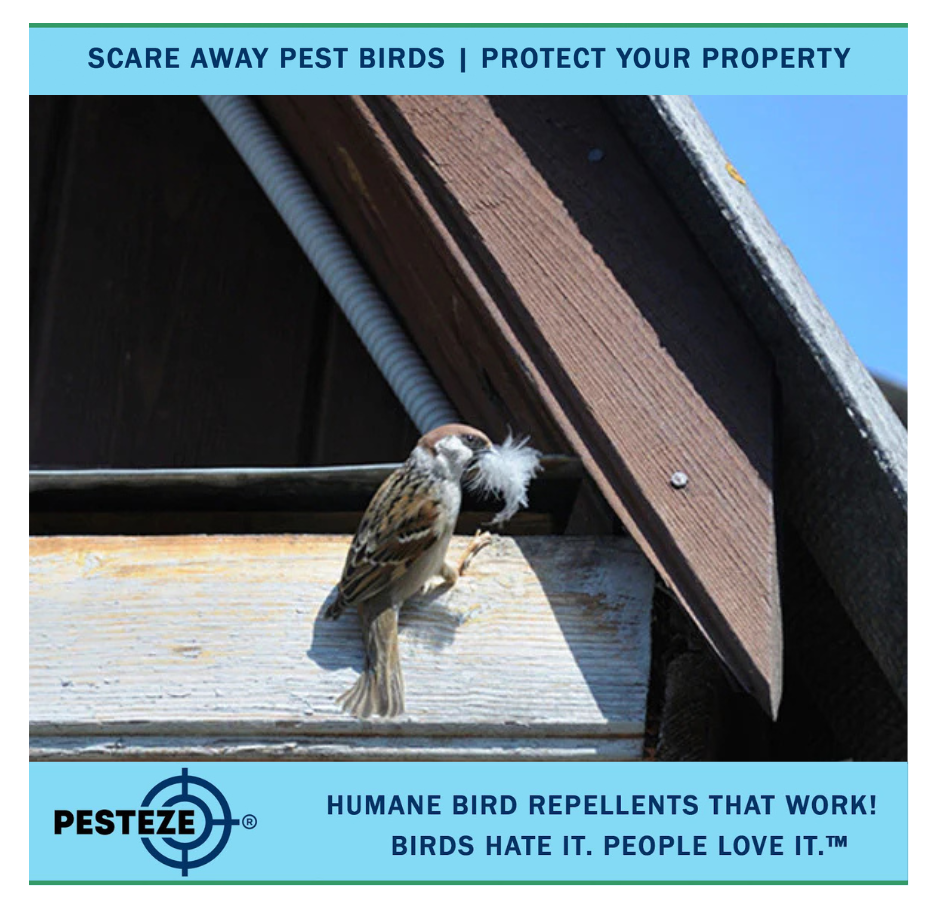STOP BIRDS FROM ENTERING YOUR HOME WITH SIMPLE, HUMANE METHODS

STOP BIRDS FROM ENTERING YOUR HOME WITH SIMPLE, HUMANE METHODS
SUMMARY
Birds entering buildings can create unwanted messes and stress for homeowners. Use simple strategies like securing entry points, visual deterrents, and sound devices to keep birds from venturing indoors without harming them.
FEATURES
- Seal Entry Points: Close off gaps, vents, and windows to prevent birds from entering.
- Install Mesh Screens: Use fine mesh over vents and chimneys to block access.
- Use Visual Deterrents: Place reflective objects near doors or windows to discourage birds.
- Sound Deterrents: Employ ultrasonic devices or bird distress calls to keep them away.
- Limit Food Sources: Keep food indoors and clean up crumbs to reduce attraction.
- Habitat Modification: Trim outdoor vegetation near entry points to reduce perching areas.
DESCRIPTION
Birds venturing indoors can cause significant problems, ranging from unpleasant messes to health risks. Whether they find their way in through open windows, chimneys, or vents, once inside, it can be challenging to guide them back out without incident. Fortunately, with a few humane methods, you can deter birds from entering your home or other indoor spaces.
First, ensure that all entry points are sealed. Birds often find their way inside through small gaps or openings around windows, doors, or chimneys. Inspect your home for these vulnerabilities and use caulking or weather stripping to seal any gaps. For chimneys, installing mesh screens is a great way to block birds from flying in while still allowing proper ventilation. Fine mesh should also be placed over exhaust vents, attic vents, and any other potential entryways.
In addition to physical barriers, visual deterrents are an effective way to prevent birds from approaching windows or doors. Reflective objects like shiny tape, mirrors, or even hanging CDs can create light flashes that scare birds away. Placing these near common entry points will discourage them from attempting to come inside.
Sound deterrents can further enhance your bird prevention efforts. Devices that emit ultrasonic sounds or play distress calls can create an uncomfortable environment for birds, making them less likely to venture indoors. These devices are particularly useful in outdoor spaces where birds congregate, such as patios, decks, or near doorways.
Another key factor is limiting food sources. Birds are often attracted to easy access to food, so keeping food stored indoors and promptly cleaning up crumbs or spills outside is crucial. If you have bird feeders, place them at a distance from your home to avoid drawing birds too close to your doors or windows.
Modifying your outdoor environment can also be an effective strategy. By trimming back trees, bushes, or shrubs near entry points, you reduce potential perching or nesting spots for birds close to your home. This form of habitat modification makes the area less appealing, encouraging them to roost elsewhere.
By combining these deterrent techniques, you can successfully prevent birds from entering indoor spaces. These methods are not only humane but also protect both the birds and your home from the consequences of an accidental indoor visit.
- Tags: Bird Control Guide
- Maanas Mehta


Comments 0